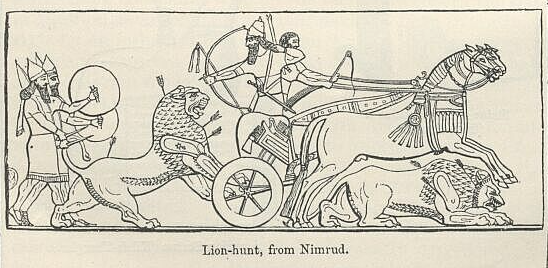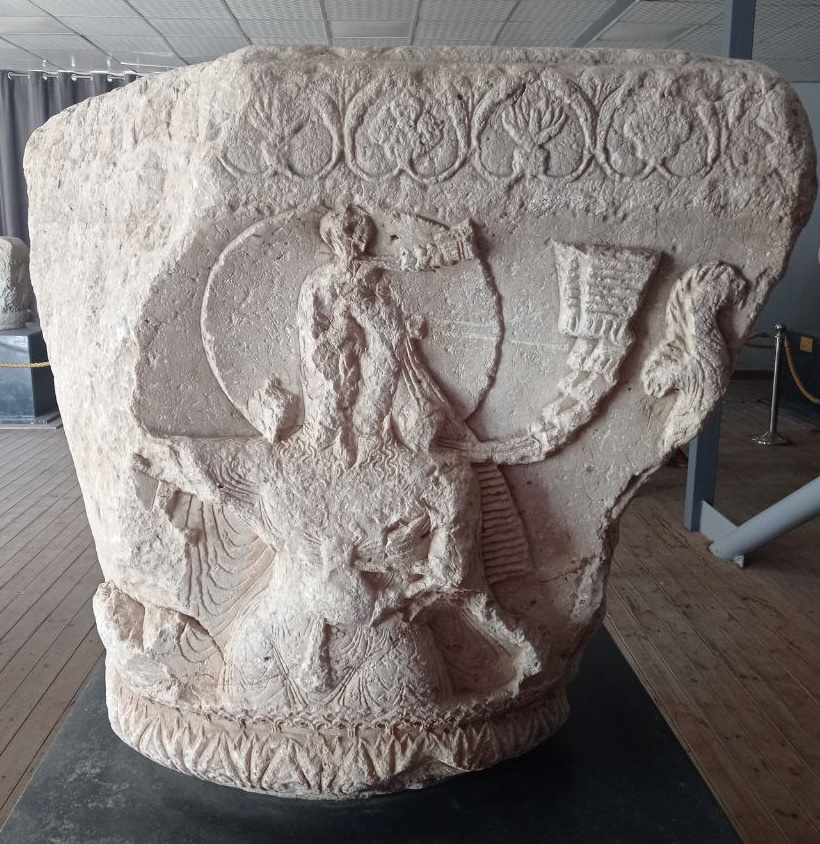Thread: Why did Assyrian kings like lion hunt so much? According to the Assyrian reliefs, the favorite occupation of the Assyrian kings in peace was a lion hunt...The earliest depictions show the king hunting lions from a chariot using bow and arrows... 

The later depictions show the king fighting lions on foot. On some of these depictions the king still used bow and arrows to kill the lion... 

I wonder if this was just a sport or was there some religious reason for this lion hunt? This image depicts the Assyrian king pouring libation in a temple on 4 dead lions...Why? As a thanks to the gods for helping him kill the lions? Or are the lions an offering to the gods? 

You know how lion is the animal calendar marker which represents the hottest and driest part of the year in Mesopotamia and Levant...The time of death caused by drought...Because beginning of August, middle of Leo, is the beginning of the main mating season of Eurasian lions... 



This is why we find lion depicted with the same heat rays radiating from his back also depicted radiating from the back of the sun god Utu/Shamash oldeuropeanculture.blogspot.com/2020/12/lion-r… 

This is also why in the oldest Mesopotamian depictions, dragons, symbols of the Mesopotamian summer (Apr/May - Oct/Nov) and destructive sun's heat, have lion's bodies oldeuropeanculture.blogspot.com/2020/07/seven-… 

And you know how it is "the killing of the lion dragon by the thunder god", which signals the end of the hot dry half of the year...And the beginning of the cool wet part of the year, when rain and abundance return to Mesopotamia and Levant...
Was the Assyrian king slaying the lion a symbolic reenactment of the Sky, Rain, Thunder god, slaying the lion dragon? Did Assyrian kings actually have to kill lions to prove that they are indeed divinely ordained to rule?
Any Assyriologists with nothing better to do, who can contribute to this thread?
Images are from "The Seven Great Monarchies Of The Ancient Eastern World Volume II" by George Rawlinson. English scholar, historian, and Christian theologian (1812-1902)" gutenberg.org/files/16162/16…
Images are from "The Seven Great Monarchies Of The Ancient Eastern World Volume II" by George Rawlinson. English scholar, historian, and Christian theologian (1812-1902)" gutenberg.org/files/16162/16…
There is already one very interesting contribution. Thank you @GOTtheJs
https://twitter.com/GOTtheJs/status/1378778074817433602
• • •
Missing some Tweet in this thread? You can try to
force a refresh

























